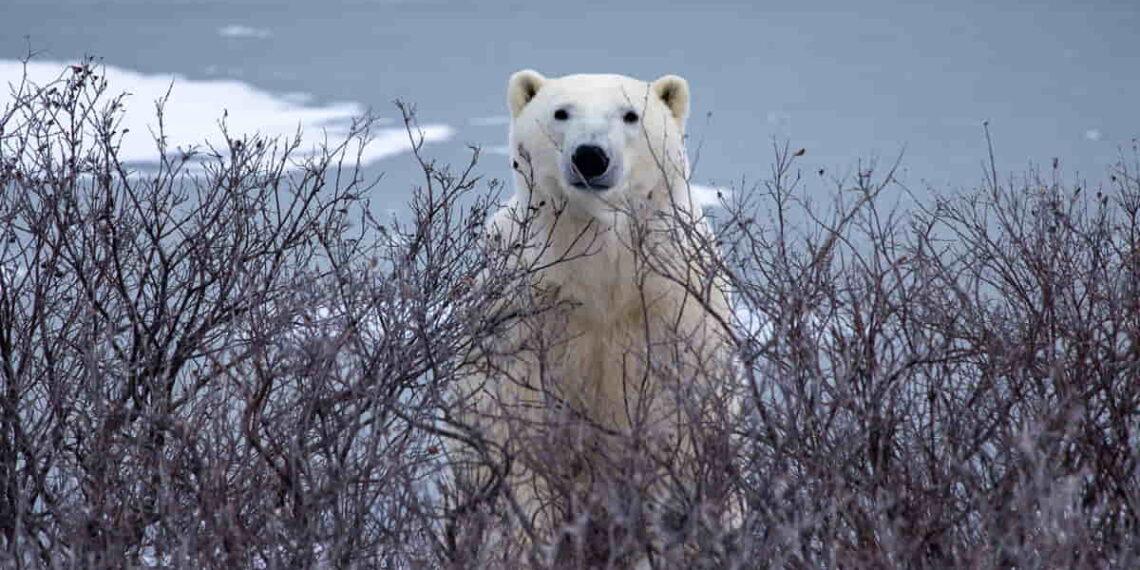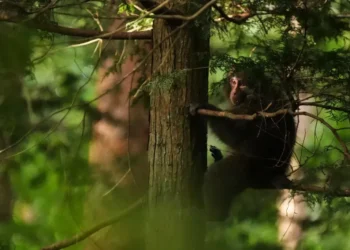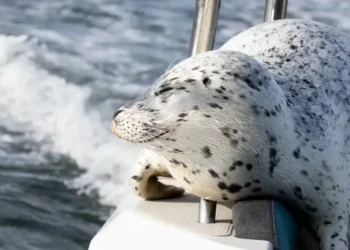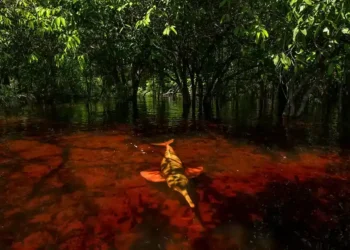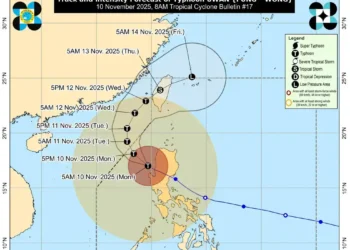Trouble in the Arctic: Polar Bears and People Struggle in a Warming World
In Churchill, a remote Arctic town often called the “polar bear capital of the world,” the relationship between humans and polar bears is deeply intertwined with the challenges of climate change. Residents live alongside the planet’s largest land predator, where bear safety is part of daily life.
Living with Polar Bears
Tee, a confident 13-year-old student, shares practical advice on dealing with close encounters. “If a polar bear is this close to you,” she says, measuring about 30 cm with her hands, “make a fist and punch it in the nose.” The sensitive noses of polar bears could prompt them to retreat, though Tee has never needed to test her advice.
Signs throughout the town remind residents and visitors to stay “bear aware.” Key rules include never walking alone at night and staying vigilant, as polar bears can run up to 25 mph (40 km/h).
Churchill sees hundreds of polar bears annually when the Hudson Bay thaws in summer, forcing the bears onto land. As the autumn freeze begins, the bears gather, waiting for the sea ice—a critical platform for hunting seals—to return.
“For polar bears, sea ice is like a dinner plate,” explains Alyssa McCall of Polar Bears International (PBI). “It gives them access to seals, their main prey.” However, the ice-free period in the bay is growing longer due to climate change, leaving polar bears on land for extended periods, with reduced access to food.
A Declining Population
The polar bear population in Churchill has dropped drastically—from 1,200 in the 1980s to almost half that today. Longer ice-free periods strain bear mothers, making it harder to sustain pregnancies and raise cubs.
“They’re our fat, white, hairy canaries in the coal mine,” says McCall, emphasizing how polar bears reflect the effects of climate change in the Arctic.
Tourism, Technology, and Conservation
Despite their precarious future, polar bears draw tourists and researchers to Churchill. Groups venture onto the tundra in specialized “buggy” vehicles to observe the bears. During one such trip, a curious young bear approached a buggy, sniffed and licked the vehicle, leaving observers awestruck by the animal’s blend of charm and danger.
Conservation efforts are underway to manage the increasing interactions between people and bears. PBI is testing an innovative radar system nicknamed “bear-dar.” This AI-powered technology scans the tundra for bears, operating 24/7 to detect them even in poor visibility.
The polar bear alert team patrols the town daily to manage bear activity. Stubborn bears are sometimes trapped using baited containers, held for 30 days to discourage them from seeking food in town, and then released far from populated areas.
Climate Change and a Changing Future
The warming Arctic is reshaping life for Churchill’s residents and polar bears alike. The town’s new Churchill Marine Observatory (CMO) is studying how the environment is responding to climate change. Research includes experiments on sea ice forecasting and oil spill responses, essential for the potential expansion of the town’s port.
Mike Spence, Churchill’s mayor, is optimistic about adapting to the changes. “We’re already looking into extending the shipping season,” he says, envisioning a bustling port in the future. Summer tourism is also growing, with visitors flocking to see beluga whales in the bay.
But while Churchill is adapting, the outlook for polar bears remains uncertain. Extended ice-free seasons and declining populations pose long-term threats.
A Town United by Challenge
For Churchill’s children, growing up with polar bears is a unique experience. Tee and her classmates watch as the polar bear alert team works to move a bear away from town. They’re reminded to have someone pick them up from school, ensuring no one walks home alone.
“If climate change continues,” says Charlie, one of Tee’s classmates, “the polar bears might just stop coming here.”
Churchill is a town of resilience and adaptation, striving to balance the needs of its community with the survival of its most famous inhabitants—the polar bears.
This article was rewritten by JournosNews.com based on verified reporting from trusted sources. The content has been independently reviewed, fact-checked, and edited for accuracy, neutrality, tone, and global readability in accordance with Google News and AdSense standards.
All opinions, quotes, or statements from contributors, experts, or sourced organizations do not necessarily reflect the views of JournosNews.com. JournosNews.com maintains full editorial independence from any external funders, sponsors, or organizations.
Stay informed with JournosNews.com — your trusted source for verified global reporting and in-depth analysis. Follow us on Google News, BlueSky, and X for real-time updates.
